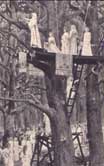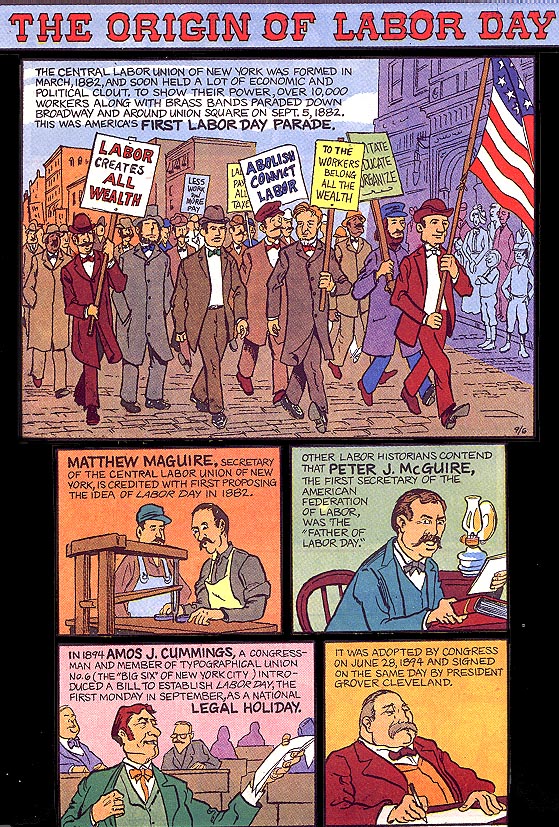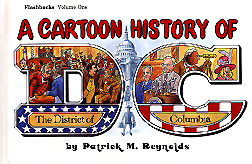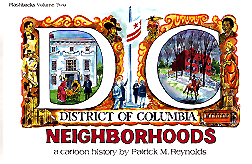 |
|
HOLIDAYS |

 |
Christmas
and Christmas Lore by T. G. Crippen
This book was first published in 1923 and has been out of print
until recently. The illustrations and original typeface are faithfully
reproduced in this hardbound edition.
The author has assembled a fascinating collection of customs,
traditions, and legends relating to Christmas drawn from chapbooks
and pamphlets of the seventeenth and eighteenth centuries and
from various books dealing with antiquities and legends. Fifty-six
chapters cover such topics as Christmas ghosts, tales, hymns,
cards, plays, Epiphany, Twelfth Night, etc.
6" x 9" 223 pages, index, illustrations hardbound
#501 Christmas Lore $42.00  |
 |
Oxford
Dictionary of Superstitions by
Iona Opie and Moira Tatem
If you ever wanted the definitive answers on subjects such as
black cats and white heather, silver bullets and gold ear rings,
look no further than this classic dictionary. Entries are reinforced
by quotations tht trace their development through the centuries.
Subjects covered include spells, cures, rituals, taboos, charms,
and omens. It is fully cross referenced for easy browsing. A
fascinating reference book for anyone interested in superstitions
and their history.
5" x 8" 493 pages, index, select bibliography, paperbound
#502 Dictionary of Superstitions $22.95  |
|
Note:
I originally titled this "The First Thanksgiving."
The forgotten Thanksgiving in what is now the United States
was actually a Catholic mass in 1598. King Philip II of Spain
authorized Don Juna de Onate to lead an expedition to colonize
the area above Mexico.
2. De Onate formed an entourage of about 400men, some with families,
plus 175 to 200 soldiers.
He had 83 ox-carts, 26 wagons and carriages, and over 2,000 head
of livestock.
Stretching 3 miles, this motley procession departed Santa Barbara,
Mexico on January 26, 1598 and trekked northward across the Chihuahuan
Desert. Eventually they ran out of water.
3. Virtually dying of thirst, the expedition reached the Rio
Grande near present-day El Paso, Texas on April 21.
4, After crossing the Rio Grande de Onate gave everyone a week
to rest up.
On April 30, 1598 Fra Alfonso Martinez aid a high mass of Thanksgiving.
5. Then deOnate took possession of the territory for Spain and
called it New Mexico. |
 |
August 31, 2003

You'll find some surprising, entertaining stories about the origins
of holiday traditions in the U.S, in this book:
 |
Big
Apple Almanac Volume One Patrick
M. Reynolds brings history to life
with great drawings and a sense of humor. Here is the early history
of New York: the Vikings in Manhattan, the Dutch settlements,
the English take over and some of their most eccentric governors.
Also, stories on the Civil War, Tin Pan Alley, and the origin
of holidays and their traditions in the U.S.
11¾" x 7"
109 pages, fully illustrated in color, index, paperbound
ISBN 0-932514-19-7
#A1 Big Apple 1 $14.95
#A1 Big Apple Almanac $14.95 |
|
Would you like to own an original
Flashbacks cartoon? Click
Here.
Here are two volumes containing reproductions of Flashbacks cartoons:
 |
A Cartoon of the
District of Columbia Flashbacks
Volume One Patrick M.
Reynolds brings history
to life with a sense of humor. His exciting drawings put you
on the scene with the conflicts, madness, plus the wheeling and
dealing that resulted in the location and construction of the
U.S. capital city. This book covers the early history of DC from
1776 to 1863. You'll be surprised at how many cities served as
the U.S. capital; you'll be amazed that the city was built--despite
all the bickering, petty jealousies, and down-right stupidity.
11¾" x 7½" 106 pages, full color illustrations,
index, paperbound ISBN 0-932514-31-6
#F1 Cartoon History of DC $25.00


|
 |
DC Neighborhoods Flashbacks
Vol. Two Artist-writer Patrick M. Reynolds takes
you to the Washington that tourists seldom see The U.S. capital
expanded with the growth of public transportation into such areas
as Shepard Park, Takoma Park, Chevy Chase, Kalorama, Dupont Circle,
Adams Morgan, Capital Hill, LeDroit Park, Tenleytown, Brookland,
and others. Stories in this book go back to the explorations
of Capt. John Smith in the 1600s and the Indian Wars of early
Virginia, continuing into the 20th century with the introduction
of the cherry trees to Washington and the end of segregation
in public schools.
11¾" x 7½" 106 pages, full color illustrations,
index, paperbound ISBN 0-932514-31-6
#F2 DC Neighborhoods $14.95
 |
|
|
Previous weeks' stories and references:
Autocamping...Baseball
History...Combat Artists...The Ghost Army of WWII...
Artists in War The
Limb Maker...Duke Ellington...Ferries Across the Chessie
.. The Italian Crisis...Ninian
Beall Sequence.....UFOs
Over Washington Culpeper
of Virginia...The
Spanish Flu Epidemic of 1918...Indians
of the Eastern Shore of MD & VA...Black
Confederates... Pirates on the Chesapeake...Chesapeake Beach...Chesapeake Bay Stories...Ghost stories...Silver Spring MD...Clovers...Hoover
Airport...Slavery...President
Garfield
e-mail:
pat@redrosestudio.com or redrosestudio@dejazzd.com
|



